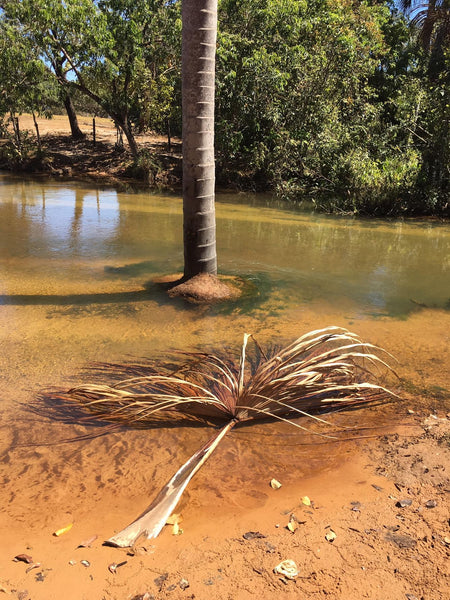- Continue Shopping
- Your Cart is Empty
Durability, longevity, and the ephemeral...
When you are using terrestrial botanical materials in your aquarium, it's virtually a given that some "tint" is to be expected. Of course, decomposition is to be expected, too.
How long botanical materials last while submerged is one of those geeky topics we love to discuss amongst ourselves in this community; and quite honestly, there is no real 100% predictable course of progress for how they will behave.
Stuff like leaves are perhaps the most ephemeral of all the botanical materials we utilize in aquariums, often nearly completely decomposing in a month or two in most systems. However, even with leaves, there are significant variations in durability. At the low end of the "durability scale", you have leaves such as catappa and guava, which typically are almost gone in weeks.

And of course, there are some very durable leaves- namely, Malaysian Yellow Mangrove leaves and Texas Live Oak leaves, which are remarkable in their persistency, often hanging on for months before breaking down to next to nothing. This is important to know when you're developing a layered leaf litter bed, as you won't have to replace as often as you would with the less durable ones.

And of course, the seed pods and other botanicals we use tend to be quite variable in their durability as well. One would think that the "harder shelled" botanicals, like Cariniana pods and Sterculia pods are super-durable and last a good long time- which, for the most part, they do. However, many factors, ranging from the water chemistry, amount of "grazing" done by resident fishes on their surfaces, and the degree of biological activity (ie; presence of microbial and small crustacean populations) in the aquarium.

Nothing lasts forever, of course. Every terrestrial botanical eventually breaks down completely, imparting organics, tannins, lignin, and other compounds into the water. That to me is the charm of what we do.

Those of us who look at Nature as it is, and choose to embrace it in our tanks, instead of some sanitized, stylized representation, find true beauty in this ephemeral characteristic that botanicals bring. Just like in the wild, the way terrestrial materials break down and "devolve" under water is fascinating, biologically useful...and beautiful.

There is much to learn from this process. And the patience, understanding, and knowledge that we gain from observing Nature do her thing in our tanks is a priceless experience.
Nothing lasts forever, but the enjoyment of the process lasts a lifetime.
Stay enamored. Stay curious. Stay patient. Stay observant...
And Stay Wet.
Scott Fellman
Tannin Aquatics






Scott Fellman
Author